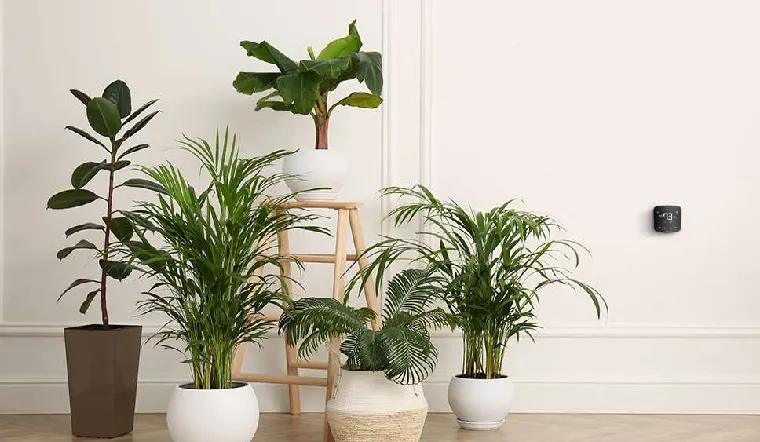Indoor air quality is an essential aspect of a healthy home environment. Houseplants not only add beauty to your living space but also play a significant role in purifying the air by removing toxins and increasing oxygen levels. At Trendy Tales, we’ve compiled a list of the best houseplants for improving indoor air quality, making your home a fresher and healthier place to live.
Why Houseplants Improve Air Quality
Through their leaves and roots, houseplants are capable of absorbing harmful toxins like formaldehyde, benzene, trichloroethylene, and carbon monoxide. They likewise discharge oxygen and increment dampness by creating water fumes, adding to better indoor air. Additionally, plants can counteract the effects of off-gassing from building materials, paints, and furniture by lowering dust levels in the air.
Top Houseplants for Air Purification
Spider Plant (Chlorophytum comosum)
One of the most effective plants for purifying the air is the spider plant. It requires little maintenance and does best in indirect sunlight. Spider plants are a great option for improving indoor air quality because they are known to remove formaldehyde and xylene.
Snake Plant (Sansevieria trifasciata)
The snake plant, also known as mother-in-law’s tongue, is a hardy plant that can handle low light and inconsistent watering. Formaldehyde, benzene, and trichloroethylene are all particularly well-filtered by it. Additionally, it is a great plant for bedrooms because it converts carbon dioxide into oxygen at night.
Peace Lily (Spathiphyllum)
Peace lilies are beautiful, easy-care plants that do well in low light. They are well-known for removing formaldehyde, trichloroethylene, ammonia, benzene, and trichloroethylene from the air. Additionally, peace lilies aid in humidity maintenance, which may be beneficial to respiratory health.
Boston Fern (Nephrolepis exaltata)
Formaldehyde and xylene can be effectively eliminated from the air by Boston ferns. They thrive in high humidity and indirect light, making them ideal for kitchens and bathrooms. Boston ferns need to be misted and watered regularly to stay healthy and work well as air purifiers.
Aloe Vera (Aloe barbadensis miller)
In addition to its healing properties, aloe vera is known for its ability to purify the air. Formaldehyde and benzene can be effectively removed with it. Aloe vera plants are ideal for busy households because they require little watering and thrive in bright indirect sunlight.
Areca Palm (Dypsis lutescens)
In addition to its healing properties, aloe vera is known for its ability to purify the air. Formaldehyde and benzene can be effectively removed with it. Aloe vera plants are ideal for busy households because they require little watering and thrive in bright indirect sunlight.
English Ivy (Hedera helix)
English ivy is a plant that can be grown as a climbing vine or in hanging baskets. Benzene, formaldehyde, xylene, and toluene can all be effectively removed from the air with it. English ivy prefers a cool, humid environment and thrives in indirect light.
Rubber Plant (Ficus elastica)
The rubber plant is a sturdy and attractive plant that does a great job of removing toxins from the air, like formaldehyde. It likes moderate watering and bright indirect light. Rubber plants are striking additions to any room because they can reach quite large sizes.
Caring for Your Air-Purifying Houseplants
Light Requirements
Various plants have shifting light necessities. Make sure your houseplants are in places where they can get the right amount of light. Some plants do best in bright, indirect light, while others can survive in low light.
Watering
Overwatering is a common mistake in houseplant care. Each plant has specific watering needs, so it’s important to understand and follow the guidelines for each type. Allow the soil to dry out slightly between waterings for most plants, but keep the soil consistently moist for humidity-loving plants like ferns.
Humidity
Many air-refining plants flourish in muggy conditions. Customary clouding, utilizing a humidifier, or putting a plate of water close to the plants can assist with keeping up with the fundamental mugginess levels.
Soil and Fertilization
To ensure adequate nutrients and prevent root rot, use potting soil that drains well. Prepare your plants during the developing season (spring and summer) with a decent, water-solvent manure to advance solid development.
Conclusion
In addition to enhancing the visual appeal of your living space, including houseplants in your decor will significantly improve the quality of the air inside your home. You can have a healthier and more energizing environment if you choose the right plants and take care of them. We at Trendy Tales believe that adding a dash of green to your home can make a big difference. Begin your indoor cultivating venture today and inhale simpler with these top air-sanitizing houseplants.




